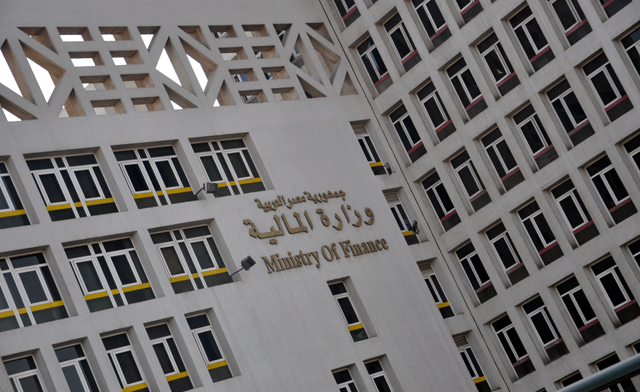SINGAPORE: Last week, ten foreign ministers from the Association of South East Asian Nations (ASEAN) met in Hanoi. When their initial gathering ended, they hosted their counterparts from across the region, including US Secretary of State Hillary Clinton. ASEAN meetings are sometimes criticized as “talking shops,” but this time dialogue and strategic leadership were needed immensely.
Ironically, the two leaders who most emphasized the need for leadership in Asia and across the Pacific recently left office. Japan’s former Prime Minister, Yukio Hatoyama, and Australia’s former premier, Kevin Rudd, both championed regionalism from early in their short time in office. But, though they are gone, the issue of regional leadership remains. Indeed, it is growing more important by the day.
The security issues facing the region, from the Korean peninsula to the outcome of the upcoming elections in Myanmar (Burma) this autumn, have grown more pressing — perhaps all the more so in view of reports that North Korea is assisting Myanmar’s ruling generals to develop nuclear capabilities. Moreover, the role and attitude of a rising China must be assessed on a regional basis, particularly given that the long-standing dispute over islets in the South China Sea may be entering a new phase. Recent Chinese statements declare the islands a “core interest,” terms usually reserved for Taiwan and Tibet.
All of these issues test the region’s ability to manage peace and mitigate tensions between its main powers — and thus underscore the concern that Hatoyama and Rudd raised. Hatoyama called for an East Asian Community, emphasizing ties with China and South Korea while questioning the continuing presence of US military bases on the island of Okinawa, the issue that eventually triggered his resignation. Rudd, by contrast, raised the idea of an Asia/Pacific Community with strong ties to the US.
These leaders’ departure from office reflected their countries’ internal politics, and their successors will focus more on declining support at home than on regional ambitions. But the questions that Hatoyama and Rudd raised — who is in Asia, and who gets to lead regional cooperation — await a satisfying answer.
As Australian and Japanese initiatives fade, attention now turns to ASEAN, which has put in place norms for peace that all major powers affirm. The ASEAN Regional Forum (ARF) is a long-standing forum that brings together foreign ministers, and that is benefiting from renewed attention on the part of Clinton, who is making her second appearance — a perfect attendance record since coming into office, and a marked improvement on the record of her predecessor, Condoleezza Rice.
But more may be needed. Asia’s major economies continue to growth and integrate, whereas the US economy remains soft, and its leaders’ attention is increasingly focused on its domestic challenges. A shift of relative strategic influence and strength is discernible, especially given the rise of India and China. But old and unresolved rivalries within Asia are finding new expression as political ambitions and military budgets expand.
A new forum will soon emerge. Building on the ASEAN defense ministers’ meeting, a formal dialogue between the defense ministers of eight key countries — China, Japan, South Korea, India, Australia, New Zealand, Russia, and the US — will run in parallel with the ARF. There is also talk about establishing a new strategic dialogue among leaders. Asian leaders already hold such talks annually at the East Asia Summit, an important initiative that brings together India and China, with ASEAN as host. ASEAN is likely to host a still-wider grouping that includes Russia and the US, though the precise framework is still being debated.
Some favor a permanent expansion of the East Asian Summit. Others suggest that leaders follow an ASEAN+8 formula, similar to the defense ministers’ meeting. An ASEAN+8 meeting of leaders could then evolve its own modalities to suit the wider geographical group, and would not need to be held each year.
The US has shown interest in a multilateral path to engagement with Asia on strategic issues. But President Barack Obama’s administration has yet to decide which format it thinks best. There is a need for substantive engagement, so that a leaders’ meeting makes sense. After all, there is already APEC for economic issues, as well as the US-ASEAN Summit, inaugurated last year.
Moreover, the ongoing economic crisis and urgent domestic matters will command much of Obama’s attention. Indeed, he has scheduled and then postponed visits to Indonesia three times already. To be sure, each time there were extenuating circumstances – a jobs summit, the final vote on the US health-care bill, and the environmental disaster in the Gulf of Mexico. But, taken together, these cancellations make clear that even a US administration that wants to engage more with Asia may still find itself preoccupied with domestic priorities, especially this year, as mid-term elections approach.
Two leaders who pushed for regionalism in Asia have departed because of domestic politics. Those who remain obviously would be well served not to overlook exigencies at home. But they also must acknowledge and attend to the post-crisis challenges facing the region as a whole.
Simon Tay, Chairman of the Singapore Institute of International Affairs and Co-Chairman of the Asia Society Global Council, is the author of Asia Alone: The Dangerous Post-Crisis Divide from America. This commentary is published by DAILY NEWS EGYPT in collaboration with Project Syndicate (www.project-syndicate.org).

